Exploring the Role of Psychoanalysis in Substance Use Disorder Treatment
Learn more about the benefits of using psychoanalysis in the treatment of substance use disorders (SUD).
Written and medically reviewed by the clinical team at Ripple Ranch Recovery Center, including licensed therapists, addiction specialists, and medical professionals.
What is Psychoanalysis?
Psychoanalysis aims to resolve unconscious conflicts and promote personality development. It’s based on the theory that our conscious mind is only a small part of our mental life, believing that our unconscious mind plays a major role in our thoughts, feelings, and behaviors.1
This method was developed by Sigmund Freud in the late 19th century. It’s been one of the most influential schools of psychology ever since.
Freud proposed that much of our mental activity occurs at an unconscious level. He believed that unresolved conflicts, repressed memories, and unconscious desires have a profound influence on our thoughts, feelings, and behaviors.2

Learn More About Ripple Ranch Recovery Center
The Components of the Mind
Freud’s model of the mind consists of three main components: the conscious mind, the preconscious mind, and the unconscious mind. He also introduced the idea of the id, ego, and superego as parts of the personality that interact to govern behavior.3
The id represents basic, instinctual drives and desires. The ego is the conscious, rational part of the mind that mediates between the id’s demands and the superego’s moral constraints. The superego is the internalized moral and societal values and norms.
Treatment Goals
The goal of psychoanalysis is to bring unconscious thoughts and feelings into awareness. The hope is that they can be understood and resolved. This is done through a process of free association, dream analysis, and transference.4
Free Association
Free association is a technique where the patient’s encouraged to say whatever comes to mind. They should do this without censoring their thoughts or feelings. This can help to bring unconscious material to the surface.
Dream Analysis
Dream analysis is another important technique in psychoanalysis. Freud believed that dreams are a window into the unconscious mind. He believed that they can provide valuable insights into the patient’s inner conflicts.
Transference
Transference is a process in which the patient transfers feelings and attitudes from their past onto the therapist. This can be a useful tool for exploring the patient’s unconscious relationships.
Psychoanalysis is a long-term form of therapy that can take several years to complete. But, it can be an effective treatment for a wide range of mental health challenges, including:
- Anxiety
- Depression
- Personality disorders
- Relationship problems
The Historical Evolution of Psychoanalysis in Substance Use Disorder Treatment
Throughout history, addiction’s been met with stigma rather than therapeutic approaches. Society has long perceived addiction as a moral failing. This led to the marginalization and punishment of those with substance use disorders.
This mindset resulted in treatments that lacked a scientific foundation like:
- Exorcisms
- Bloodletting
- Extreme measures like chaining people in asylums
These approaches were marked by ignorance and prejudice. They created a cycle of suffering rather than providing genuine help.
Sigmund Freud and the Beginnings of Psychoanalysis
The transformation of addiction treatment began with Sigmund Freud’s pioneering work. Freud was an Austrian neurologist and the father of psychoanalysis. He revolutionized our understanding of human behavior in the late 19th and early 20th centuries.
His revolutionary concepts challenged the prevailing beliefs of his time. These ideas laid the groundwork for modern psychoanalysis and later played a pivotal role in substance use disorder treatment.
The Initial Role of Psychoanalysis in Addiction Treatment
The initial application of psychoanalysis in addiction treatment was groundbreaking. Freud and his colleagues recognized that addiction isn’t just a matter of willpower. It’s a complex interplay of psychological, emotional, and environmental factors.5
The unconscious motivations behind addiction are often rooted in unresolved traumas and unconscious conflicts. This became a focal point in the treatment process.6
Understanding Causes Over Symptoms
This approach aimed to understand underlying causes over addressing symptoms. It paved the way for a more empathetic and effective addiction treatment.
Over time, psychoanalysis played a vital role in helping people:
- Confront their unconscious motivations
- Heal from past traumas
- Achieve sobriety
- Lay the foundation for lasting recovery
How Psychoanalysis Helps People Uncover Deep-Seated Motivations
Psychoanalysis provides a unique framework for unraveling hidden causes of addiction. Therapists using psychoanalytic techniques guide people through a process of introspection. They help them delve into their unconscious to unearth the underlying causes of their addictive behaviors.
The Exploration Within
This therapeutic journey involves exploration, self-reflection, and the analysis of dreams and free associations. It’s all aimed at bringing hidden motivations to the surface.
Shedding Light on the Roots
Through this process, patients gain insight into the roots of their addiction, which can often be traced back to:
- Past traumas
- Unmet needs
- Unresolved conflicts
By shining a light on these issues, psychoanalysis allows people to confront and address what’s been fueling their addiction. It’s through this self-discovery and conflict resolution that people achieve lasting recovery.
A Deeper Understanding of Addiction
Psychoanalysis in addiction treatment provides an understanding of the factors contributing to addiction.
It goes beyond surface-level explanations and empowers people to:
- Confront their past
- Make sense of their behaviors
- Embark on a journey toward sobriety
The aim is to address the unconscious motivations that have held them captive for so long.
A Path Rooted in Self-Awareness
This analysis offers a path to recovery rooted in self-awareness and emotional healing. This approach paves the way for people to overcome addiction and achieve lasting wellness.
Psychoanalysis vs. Other Therapeutic Modalities in Addiction Treatment
When it comes to addiction treatment, there is no one-size-fits-all solution. Different therapeutic modalities offer varying approaches to tackling substance use disorders.
Here are some key distinctions:
- Treatment duration: This is a long-term form of therapy, often lasting several years. Other therapeutic modalities, such as cognitive-behavioral therapy (CBT) and medication-assisted treatment (MAT), are often shorter-term approaches.
- Treatment focus: Psychoanalysis focuses on helping patients understand the unconscious motivations behind their addiction. Other therapies focus on helping patients to develop specific skills and coping mechanisms to address their addiction.
- Patient-therapist relationship: Psychoanalysis emphasizes the development of a close therapeutic relationship between the patient and the therapist. Other therapeutic modalities may place less emphasis on the patient-therapist relationship.
Important Note About Choosing Psychoanalysis
It’s important to note that psychoanalysis isn’t the only effective form of addiction therapy. Other therapeutic modalities, such as CBT and MAT, have also been shown to be effective in helping people to achieve sobriety.
The best approach to addiction treatment varies depending on each person’s needs. Some people may benefit from psychoanalysis. Others may benefit from other therapeutic modalities or a combination of approaches.
The Interplay Between Early Life Experiences, Trauma, and Addiction
Understanding the complexities of addiction involves understanding early life experiences. A person’s formative years can leave profound imprints on their psychological and emotional well-being.
Adverse childhood experiences, traumatic events, and family dynamics can significantly influence the development of addiction. Former experiences can make people seek solace in substances as a way to cope with their pain.
Here are some examples of how psychoanalysis can use this information in treatment:
Understanding the Effects on Personality and Relationships
This method helps patients understand how their early life experiences and trauma shaped their personality and relationships. This understanding can help patients to make more conscious choices in their lives to avoid situations that may trigger their addiction.
Developing Healthy Coping Mechanisms
Psychoanalysis also teaches patients healthier coping mechanisms for dealing with stress, anxiety, and other difficult emotions. This can help them reduce their reliance on substances as a way to cope with difficult emotions.
Developing a Support System
This method helps patients build stronger relationships and create a more supportive social network. This can provide them with the support they need to maintain their sobriety.
Balancing the Past, Present, and Future in Addiction Recovery
In the world of psychoanalysis, the past is not a just collection of memories but a dynamic force that shapes the present and future. Delving into one’s history is essential to understanding the origins of addiction.
By exploring early life experiences, traumas, and unresolved conflicts, psychoanalysis uncovers the deep-seated motivations that lead to addictive behaviors. It seeks to heal the wounds of the past to pave the way for a brighter future.
Focusing on the Present and Future in Addiction Recovery
Effective addiction recovery also demands a keen focus on the present and future. Addiction is a complex interplay of various factors, including immediate triggers and ongoing life circumstances.
People must learn to:
- Navigate daily challenges
- Develop coping strategies
- Set goals for a drug-free future
Striking the right balance between past exploration and future orientation is where true healing happens.
Strategies for Striking the Right Balance
Balancing the past, present, and future in treatment requires a tailored approach. Therapists often integrate elements of CBT and other evidence-based practices into psychoanalysis.
This combination allows people to address immediate concerns while also exploring the roots of their addiction. Setting achievable goals and creating a roadmap for the future also empowers people to envision a life free from addiction.
Combining these elements offers a comprehensive and effective approach to addiction recovery. It enables people to heal from their past while actively building a brighter, substance-free future.
Psychoanalytic Techniques in Substance Use Treatment
Several psychoanalytic techniques and concepts, including transference and countertransference, can play a crucial role in substance use treatment. Here’s how:
Transference and Countertransference
The therapeutic relationship in addiction treatment is a complex web of emotions. Transference and countertransference are vital components of this relationship.
Transference involves patients projecting feelings or behaviors onto the therapist, often mirroring past relationships. This can reveal deep-seated issues contributing to addiction.
Countertransference, on the other hand, is the therapist’s emotional response to the patient, shedding light on their own unresolved issues. Managing these dynamics is essential for fostering a healthy therapeutic relationship and understanding the roots of addiction.
The Role of Dream Analysis
Dreams offer a window into the unconscious, making dream analysis a powerful tool in addiction therapy.
Examining dream content can reveal:
- Hidden desires
- Fears
- Unresolved conflicts related to addiction
Dreams often provide insights that verbal communication cannot. Dream analysis allows people to explore their complex relationship with substances in a unique way.
How Interpretation and Analysis Contribute to Recovery
Interpreting dreams and analyzing thoughts and behaviors contributes significantly to the recovery process. It offers a deeper understanding of their motivations and triggers.
By exploring these elements, people can gain insight into their addiction. This empowers them to make lasting changes and work toward a life free from substance use disorder.
These psychoanalytic techniques bring the hidden aspects of addiction to the surface. They provide a pathway to recovery based on self-awareness and emotional healing.
The Long-Term Nature of Psychoanalysis in a Time-Limited Structure
Psychoanalysis is a long-term form of therapy, often lasting several years. Addiction treatment programs, on the other hand, are often time-limited. This can pose a challenge for people seeking psychoanalytic treatment for their addiction.
But, there are a few ways to integrate psychoanalysis into a time-limited addiction treatment program:
Focus on Specific Issues
Psychoanalysts can work with patients to identify the specific issues that are most relevant to their addiction. Once these issues are identified, the psychoanalyst can help the patient to work on them in a focused and efficient way.
Use Other Modalities in Conjunction with Psychoanalysis
Psychoanalysts can use other therapeutic modalities, such as CBT and MAT, to help patients achieve their treatment goals. This can help to accelerate the progress of treatment and to make it more feasible within a time-limited setting.
Refer Patients after Completing an Addiction Treatment Program
Psychoanalysts can refer patients to long-term psychoanalysis after they’ve completed their addiction treatment program. This allows patients to continue their psychoanalytic work and achieve deeper levels of understanding and recovery.

Considerations for Therapists and Clients
Therapists and clients should keep the following considerations in mind when integrating psychoanalysis into a comprehensive substance use treatment plan:
- Treatment duration: Psychoanalysis is a long-term form of therapy. It’s important to consider whether the client has the time and resources to commit to long-term treatment.
- Treatment goals: It’s important to clarify the client’s treatment goals and make sure they’re aligned with the goals of psychoanalysis.
- Other therapeutic modalities: Consider using other therapeutic modalities, such as CBT and MAT, in conjunction with psychoanalysis to accelerate progress and make it more feasible within a time-limited setting.
- Referral for long-term psychoanalysis: Refer clients to long-term psychoanalysis after they complete their addiction treatment program if they’re motivated to continue their psychoanalytic work.
Ripple Ranch and Your Journey to Recovery
At Ripple Ranch, we understand that addiction is a complex condition with deep-seated roots. That’s why we offer a comprehensive treatment approach that includes psychoanalysis, CBT, MAT, and other evidence-based therapies to help you heal from the inside out.
We believe that everyone deserves the chance to recover, and we’re here to support you every step of the way. Contact us today to learn more about how we can help you achieve lasting sobriety.
Resources
- 1https://www.britannica.com/science/psychoanalysis
- 2https://www.webmd.com/mental-health/what-is-psychoanalysis
- 3https://www.verywellmind.com/what-is-psychoanalysis-2795246
- 4https://www.verywellhealth.com/psychoanalytic-therapy-5221426
- 5https://www.ncbi.nlm.nih.gov/pmc/articles/PMC5844159/
- 6https://www.ncbi.nlm.nih.gov/books/NBK64952/





